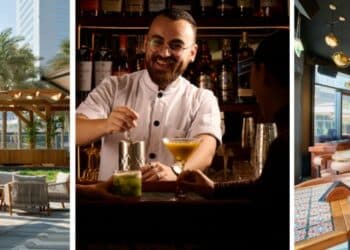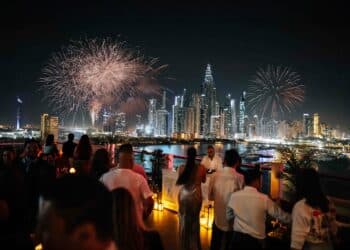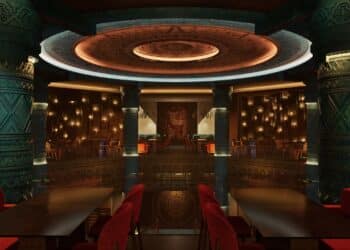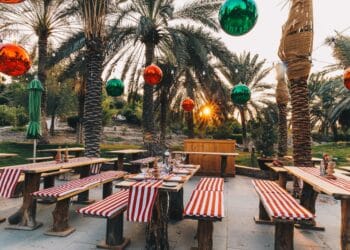Local, organic produce, and simple ingredient combinations with a playful twist are the secret behind Tomas Reger’s light yet filling dishes
Launching a new concept next door to the likes of Dubai institutions Zuma and Le Petite Maison, is no mean feat, even for Czech chef Tomas Reger, who owns his own food consultancy and is the brainchild behind Dubai’s Secret Supper Club, From One Chef to Another, and Bloomie’s Kitchen. But Reger says he is not looking to compete with the established venues, preferring instead to “complement” them.
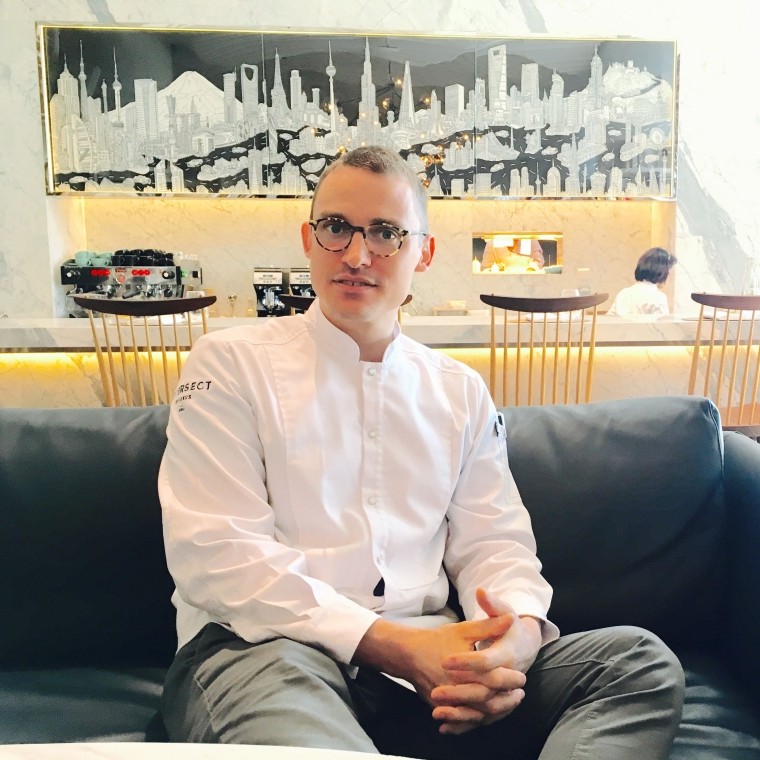
“When I got here in 2007, it was very competitive, nobody would tell you where they got their produce from and I think that’s just wrong. I don’t compete, I complement. I don’t want to be the best, I want to cooperate,” he says with a grin.
Having first arrived in the region nine years ago to open Chinese restaurant Steam Sum Dim Sum, he later set up Tomas Reger Food Consultants and opened a number of concepts throughout the region, mainly in Lebanon. Most recently, he was tasked with opening Intersect by Lexus, which is headed up by Benjamin Nicholas, and marks the second venue for the brand globally following Tokyo.
Reger admits his creations are simply “food I like to eat myself”, with “playful” dishes such as the Chickpea Salad containing braised chickpeas, cauliflower shavings, radicchio leaves, and roasted hazelnuts in citrus vinigerette, which is designed to surprise the customer since the chickpeas and hazelnuts look the same, but have contrasting textures.
“I think it’s amusing in a way. You get little jokes in the dishes – like the hazelnut and chickpeas – you eat it and then realise and you giggle at it, I like it when people loosen up and get the joke,” he explains.
The ingredients and dishes are also perfectly geared towards business lunches, which of course, is an important consideration being located in DIFC. A set menu is offered from 11am -3pm, with two courses priced at AED 90 and three courses at AED 110. And while dishes are mostly light, they are also surprisingly filling, which Reger puts down to the taste combinations that echo Korean cuisine: “You get all your flavours covered ̶ if you go to a Korean place you’re full before you’re stuffed because you’ve had every flavour you crave.

“Here I want to give people the energy for the rest of the day; I think that’s really important. A lot of the ingredients we use are proteins and vegetables or slow-release carbohydrates like barley, buckwheat, and things that don’t spike. You feel light, even after finishing a three course meal.”
He often prefers to focus on the garnish instead of the protein as the main event, explaining that the overlooked ingredients can come to the fore if handled correctly. Sometimes he uses just three items per dish, allowing each to shine.
“If you think about it it’s always the same – you get your lamb, beef, chicken, quail and a couple of kinds of fish,” he explains.
“But what you put with it is what makes it stand out so you start with the garnish, or the stuff you find interesting, and then you put the main protein, and then you figure out how to pair it.”
Another trick of Reger’s is to use different preparations of the same ingredient within one dish. For example, the slow cooked venison shoulder with artichokes, egg yolk confit and coffee jus, contains artichoke cooked slowly in some fat to create a tender, winter texture, and shaved, raw artichoke, which provides a crunch.
And when it comes to the protein, Reger admits that he prefers to use secondary cuts, rather than the popular rib eye, fillet and striploin, and again, if handled in the right way, these can be even tastier than the bestsellers.
“[Secondary cuts] have more flavour, and if you know how to manipulate the protein, you can end up with really nice tender cuts. The flavour is stronger because the meat works harder,” he says.

Much of the meat at Intersect by Lexus is cooked sous-vide, and Reger explains that not only does this help to get the best flavours out of secondary cuts, but it allows him to make use of parts of the animal that may otherwise go to waste.
“One other thing sous ̶ vide does is it cleans it up; you extend your shelf life, you get less trimmings, less waste. When you train staff, you tell them to use the offcuts, use the trimmings,” he says.
And while reducing waste helps cut costs and save space in a small kitchen ̶ which has just 36 kilowatts of power ̶ Reger believes it is also his responsibility to train his staff to try and offset the restaurant’s environmental impact.
With this in mind, another of his priorities is to increase the percentage of produce sourced from local suppliers, and already 10 – 15% of ingredients are procured locally, the majority of which are vegetables such as aubergines and tomatoes.
“It tastes better, it lasts longer, but also it comes back to the community,” he says. “If you have influence you should use it to help the community; the farmers need it. They have all the produce and they throw away two tonnes of it a week because nobody wants it!”
However, it also comes down to health and safety legislation, and some of the local suppliers’ produce isn’t certified as safe for use in restaurants. This is a particular challenge for those that go through hotel procurement, such as Intersect by Lexus.
The restaurant is owned by Al-Futtaim and uses the procurement systems of InterContinental Dubai Festival City, which has the same owners. And while this has its advantages, it also means that Reger is subject to the same red tape as hotel restaurants, rather than having the freedom to procure directly from suppliers, as most standalone outlets do.
Reger overcomes this challenge to some extent by paying a weekly visit to the Baker & Spice Farmer’s Market in Business Bay to pick up mustard greens, cress, kale, chards, olive oil and edible flowers.
“I know during season it’s better stuff than you can get imported; imported stuff is very generic. We went through a selection process to try and get the best tasting produce, but vegetables that you pick right away are so much better tasting than those that has been travelling for three or four days.”

And Reger is passing these learnings on to his team, which comprises 10 people at the moment ̶ two stewards and eight chefs ̶ who Reger says were selected mainly for their passion.
“My [hiring] strategy is to speak to people about food, and if they light up, then you know they’re passionate about it. Then you start talking to them about other things and you realise they have a life outside of work, which is also important.”
And having been heavily involved in the day ̶ to ̶ day operations of the restaurant when it launched on December 15, Reger is now challenging himself to take a step back and allow his staff to showcase their own talent.
“I don’t want anyone that just follows the recipe – I want them to learn something new, and deliver and understand what we’re trying to do.
“This is an important project for me… I get into it and I work my way out to an extent and try to start trusting my staff to see how they deliver, and I know they will. Already in the last two months they’ve been cooking the dishes more than I have,” he says.
Reger too is still learning, and he would like to do more collaboration with other chefs, particularly those from other parts of the world, such as some talented individuals he met on a recent trip to San Sebastian in Spain.
“I want to bring chefs over and do joint dinners and mess around with talent – people who do their own thing, or don’t have the opportunity to do their own thing because they’re stuck in a concept. I’d like to do cooperations with other chefs,” he says.
“The idea is that they have fun and see other places and we learn from them. That’s how it gets better,” he says.

